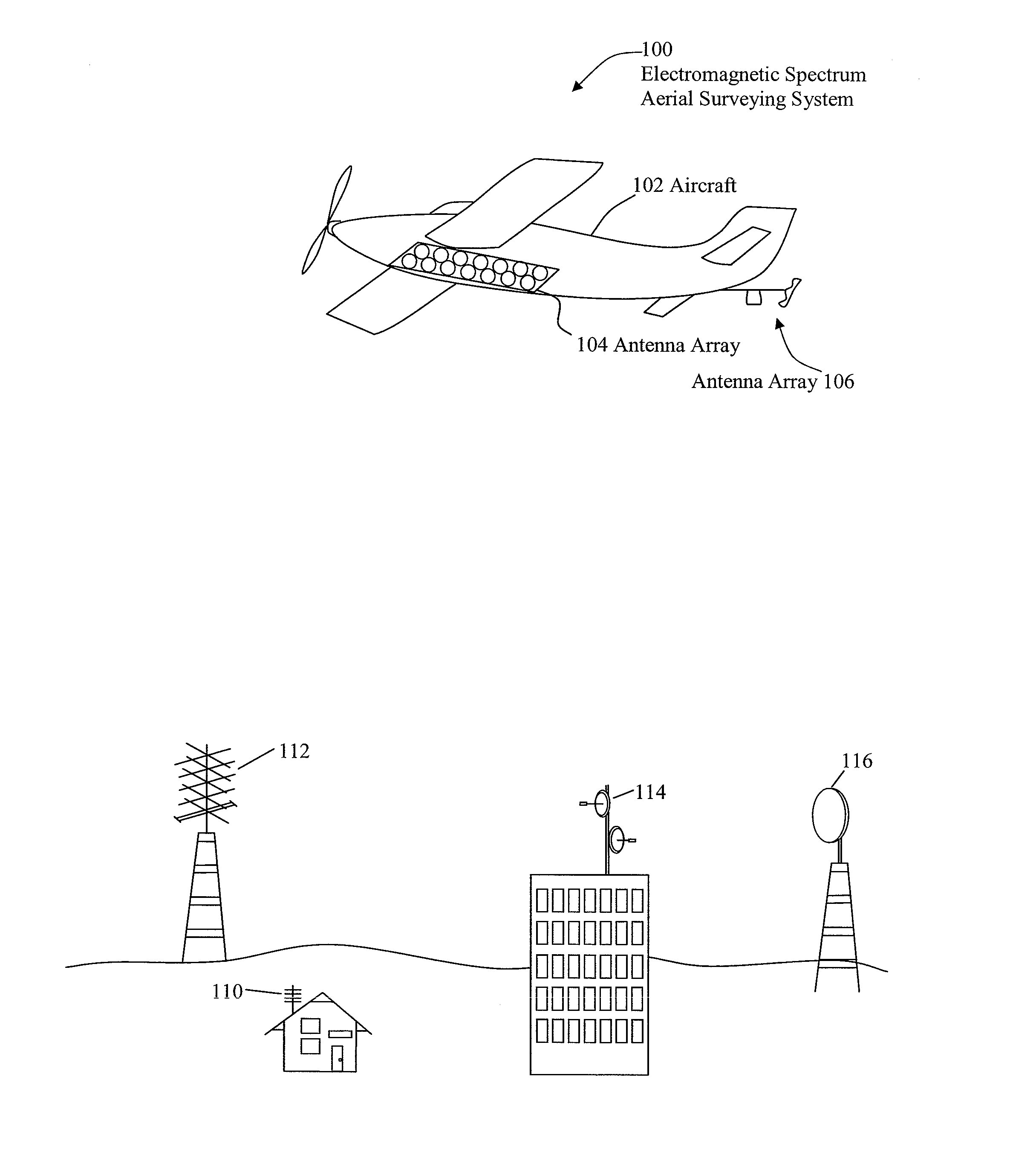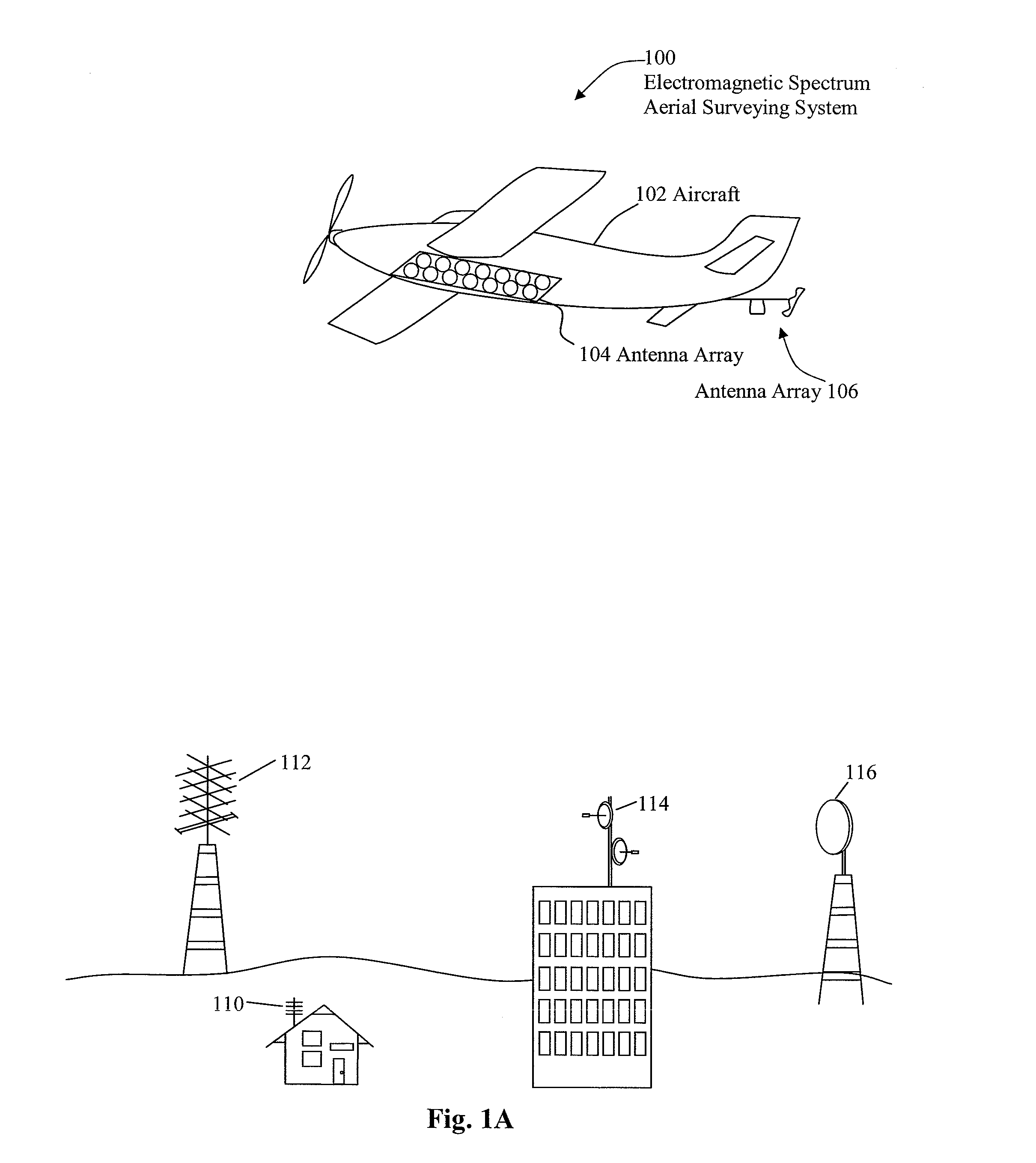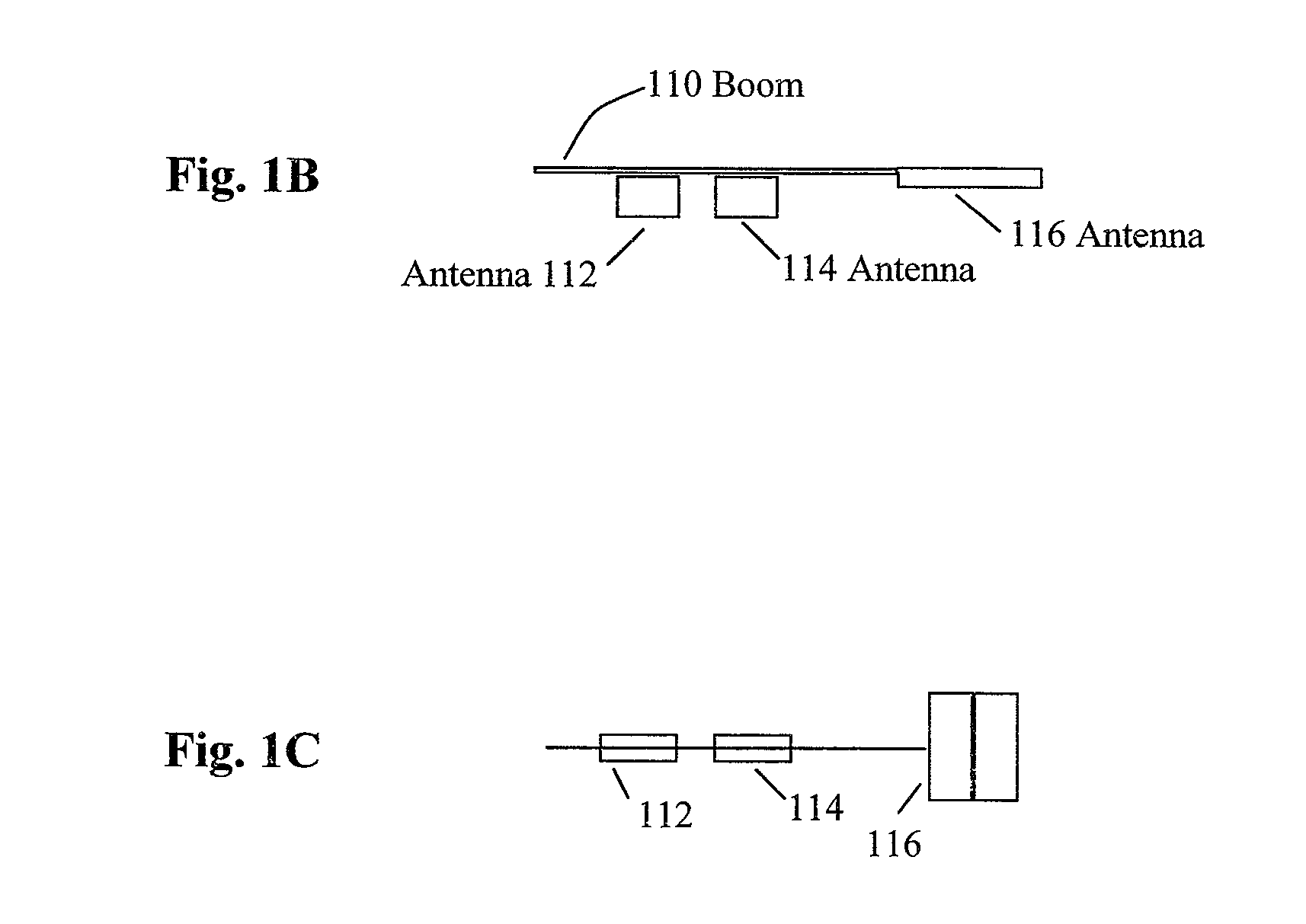Electromagnetic spectrum aerial surveying
a technology of electromagnetic spectrum and aerial surveying, which is applied in the direction of direction finders, instruments, spectral/fourier analysis, etc., can solve the problem of little empirical data that shows how the spectrum is actually being used
- Summary
- Abstract
- Description
- Claims
- Application Information
AI Technical Summary
Benefits of technology
Problems solved by technology
Method used
Image
Examples
Embodiment Construction
[0009]FIG. 1A is a schematic representation of an electromagnetic spectrum aerial surveying system. As shown in FIG. 1A, an aircraft, such as airplane 102, has an antenna array 104 that is attached to a lower portion of airplane 102 and an antenna array 106 attached to the tail of airplane 102 to scan electromagnetic radiation generated from electromagnetic sources, such as antennas 110, 112, 114, 116. Ground-based antennas 110, 112, 114, 116 may comprise numerous different types of antennas for transmitting signals at various frequencies and various modulation protocols. For example, antenna 112 may be mounted on top of a tower that broadcasts TV signals over the air. Antenna 114 may be a set of antennas that transmit and receive personal communication service (PCS) wireless communications. Antenna 116 may be a microwave repeater mounted on a tower for transmitting broad spectrum microwave signals over substantial distances using high power microwave signals. Antenna 110 may be a h...
PUM
 Login to View More
Login to View More Abstract
Description
Claims
Application Information
 Login to View More
Login to View More - R&D
- Intellectual Property
- Life Sciences
- Materials
- Tech Scout
- Unparalleled Data Quality
- Higher Quality Content
- 60% Fewer Hallucinations
Browse by: Latest US Patents, China's latest patents, Technical Efficacy Thesaurus, Application Domain, Technology Topic, Popular Technical Reports.
© 2025 PatSnap. All rights reserved.Legal|Privacy policy|Modern Slavery Act Transparency Statement|Sitemap|About US| Contact US: help@patsnap.com



